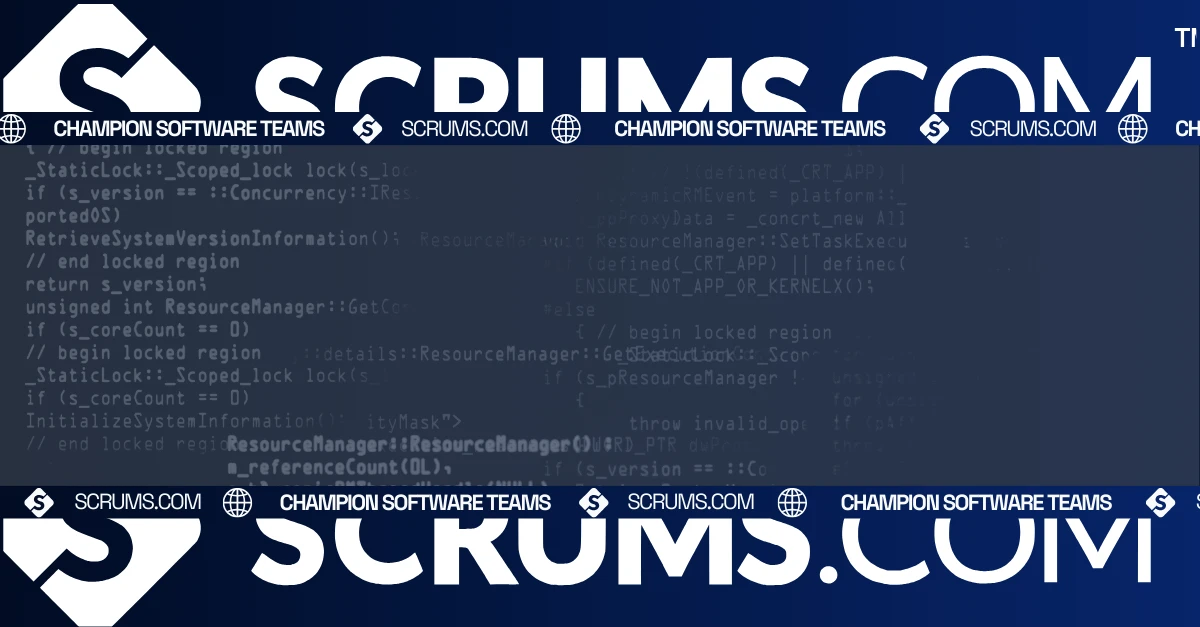Version Control: A Tech Term Explained
About Version Control
Version control is a system within software development services that helps manage changes to source code over time. It enables multiple developers to collaborate on the same project by tracking and recording each change made to the codebase. By maintaining a history of changes, version control systems (VCS) allow teams to revert to previous versions, compare changes, and coordinate development efforts more effectively. There are two main types of version control systems: centralized and distributed.
Popular Version Control Systems
Git:
- Overview: Git is a distributed version control system known for its flexibility, performance, and robustness. It allows developers to work on multiple branches simultaneously and supports extensive collaboration.
- Features:
- Distributed architecture
- Branching and merging
- High performance with large codebases
- Integrated with platforms like GitHub, GitLab, and Bitbucket
Subversion (SVN):
- Overview: SVN is a centralized version control system that provides a single repository for all code. It is widely used in enterprise environments and focuses on simplicity and consistency.
- Features:
- Centralized repository
- Revision history
- Access control
- Support for large binary files
Mercurial:
- Overview: Mercurial is another distributed version control system that emphasizes simplicity and ease of use. It is similar to Git but has a different approach to branching and merging.
- Features:some text
- Distributed architecture
- Easy-to-use command-line interface
- Strong branching and merging capabilities
- Integrated with platforms like Bitbucket
Perforce Helix Core:
- Overview: Perforce Helix Core is a version control system designed for large-scale software development services, particularly in industries like gaming and enterprise software.
- Features:
- Centralized repository with distributed capabilities
- Scalable for large codebases
- Advanced branching and merging
- Strong support for binary files
How It Works
Version control systems track and manage changes to code through a series of processes, including:
Initialization:
- Creating a Repository: A repository is created to store the codebase. In centralized systems, this repository is located on a central server, while in distributed systems, each developer has a local copy of the repository.
Committing Changes:
- Making Changes: Developers modify files and make updates to the code.
- Staging Changes: Changes are staged (prepared) before they are committed to the repository. This allows developers to review and select specific changes to include.
- Committing: Staged changes are committed to the repository, creating a new version with a unique identifier (commit ID). Each commit includes a description of the changes.
Branching:
- Creating Branches: Developers create branches to work on new features or bug fixes independently from the main codebase. Each branch represents a separate line of development.
- Switching Branches: Developers switch between branches to work on different tasks or features.
Merging:
- Merging Changes: Once work on a branch is complete, changes are merged back into the main branch or another target branch. This process integrates the new code with the existing code.
- Resolving Conflicts: Conflicts may arise if changes on different branches overlap. Developers must resolve these conflicts manually to ensure code integrity.
Pull Requests and Merge Requests:
- Review and Approval: Pull requests (in Git) or merge requests (in other systems) are used to review changes before merging. This process involves peer reviews and discussions to ensure code quality and compliance with project standards.
Version History:
- Tracking Changes: The version control system maintains a history of all commits, providing a detailed record of changes, who made them, and why.
- Reverting Changes: Developers can revert to previous versions if needed, using the commit history to undo unwanted changes or recover lost code.
Examples of Use in Real Projects
Open Source Projects:
Example: The Linux kernel project uses Git to manage its vast codebase, with numerous contributors working on different features and fixes simultaneously. The branching strategies and pull requests help coordinate contributions and maintain code quality.
Corporate Development:
Example: Companies like Google and Facebook use Git for their internal development, employing branching strategies like Git Flow or GitHub Flow to manage code changes across multiple teams and projects.
Startups and Small Teams:
Example: Startups and small development teams often use GitHub Flow or feature branching to manage their code, enabling rapid development and deployment with minimal overhead.
Game Development:
Example: Game development studios use Perforce Helix Core to handle large codebases and binary assets, managing complex branching and merging scenarios to support collaborative development.
Benefits of Version Control
- Code History and Rollback: Version control systems provide a complete history of changes, allowing developers to revert to previous versions if needed and understand the evolution of the codebase.
- Collaboration: Multiple developers can work on the same project simultaneously without overwriting each other's work. Branching and merging facilitate coordinated efforts and the integration of changes.
- Code Review and Quality: Version control systems enable code reviews by tracking changes and facilitating discussions through pull requests or merge requests.
- Conflict Resolution: Branching strategies and version control tools help manage and resolve conflicts that arise when merging code from different branches.
- Backup and Recovery: Version control systems serve as a backup for code, providing a safety net in case of accidental data loss or corruption.
Common FAQs Around this Tech Term
Version control is a system that tracks and manages changes to source code, allowing multiple developers to collaborate on a project while maintaining a history of changes.
The main types are centralized version control systems (e.g., SVN) and distributed version control systems (e.g., Git and Mercurial).
Centralized systems have a single repository for all code, while distributed systems allow each developer to have a local copy of the entire repository, enabling offline work and better collaboration.
Common branching strategies include feature branching, Git Flow, GitHub Flow, and trunk-based development.
Version control systems provide benefits such as maintaining a history of changes, facilitating collaboration, enabling code reviews, managing conflicts, and offering backup and recovery options.
Explore Software Development Blogs
The most recent trends and insights to expand your software development knowledge.






